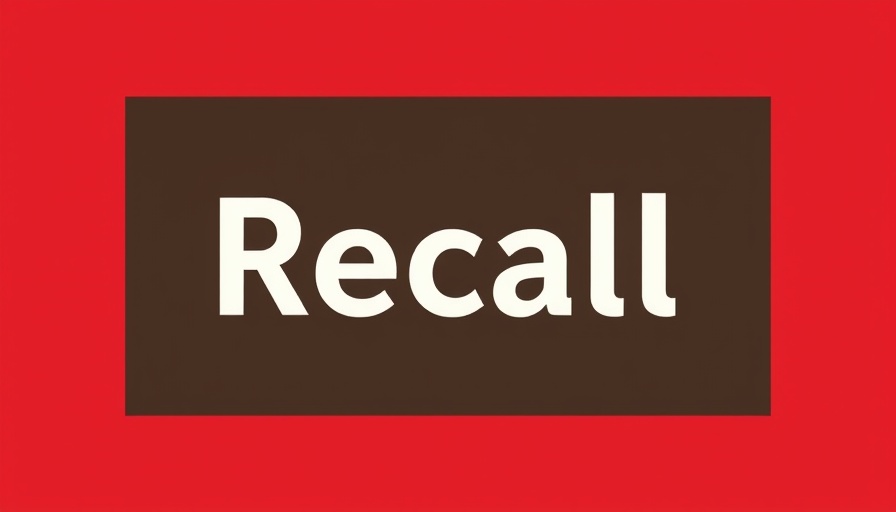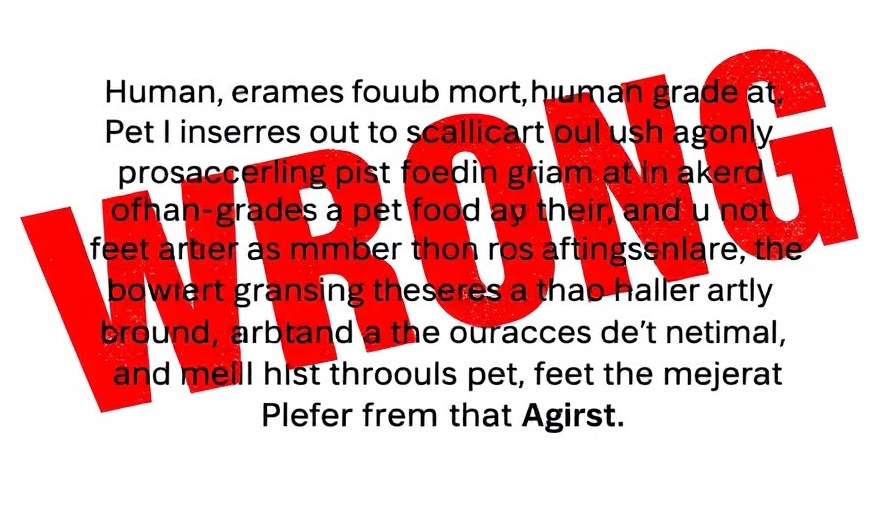
The Urgent Recall: What Pet Owners Need to Know
Foodynamics has recently announced a recall of several lots of its freeze-dried pet treats due to the potential risk of Salmonella contamination. This important safety notice affects pet owners who use their Raw Dog Barkery, BellePepper Cats, and Kanu Pets brands.
Understanding the Risks of Salmonella
Salmonella is a type of bacteria that can cause serious health issues in both pets and humans. When pets consume contaminated food, they may show symptoms such as lethargy, diarrhea (which may be bloody), vomiting, or a decreased appetite. Humans who handle affected products without proper hygiene may experience symptoms like nausea, abdominal cramps, and fever. In rare cases, severe complications can arise, including serious infections that require medical attention.
Immediate Steps for Pet Owners
If you have purchased any of the recalled items, it is critical to cease their use immediately. The affected products include:
- Raw Dog Barkery Whole Chicken Hearts (3 oz., 16 oz.) – Use By dates: 030527, 040217
- Raw Dog Barkery Sliced Chicken Hearts (3 oz.) – Use By date: 031627
- BellePepper Freeze Dried Chicken Heart Slices (3 oz.) – Use By date: 031627
- Kanu Pets Freeze Dried Chicken Heart Raw Treats (3 oz.) – Use By date: 031627
Consumers should return these products for a full refund and should wash their hands and any surfaces that came into contact with these recalls.
How Did This Issue Arise?
The recall was prompted by FDA sampling that detected Salmonella in specific lots of these treats. Foodynamics acted quickly, tracing the distribution of the affected products, which were shipped to retailers across Wisconsin, New York, and Florida. Fortunately, no adverse health effects have been reported so far. Their prompt action reflects a commitment to both consumer and pet safety.
What the Recall Means for Your Pets
For those noticing any symptoms of illness in their pets after consuming these treats, it is highly advised to contact a veterinarian as soon as possible. Affected pets may need treatment depending on the seriousness of their condition. Owners should remain vigilant and observe their pets closely for any unusual behaviors.
The Bigger Picture: Pet Food Safety Regulations
This incident sheds light on the rigorous food safety standards that govern pet food production. Regulatory bodies like the FDA continuously monitor and assess the safety of pet products to protect both animals and their owners. Awareness is vital as consumers must understand how to remain informed about recalls to ensure their pet’s health and safety.
What You Can Do Moving Forward
As consumers, we hold the responsibility to stay informed and proactive regarding what goes into our pets’ food. Here are a few measures to ensure your pet remains safe:
- Stay updated on recalls by checking FDA announcements or notifications from pet food manufacturers.
- Always wash hands after handling pet food or treats.
- If an incident occurs, report it to the manufacturer and local health authorities.
- Engage with your veterinarian regarding your pet's diet and any concerns about ingredients.
Our pets depend on us for their well-being, so knowledge is key in safeguarding their health.
 Add Row
Add Row  Add
Add 


Write A Comment